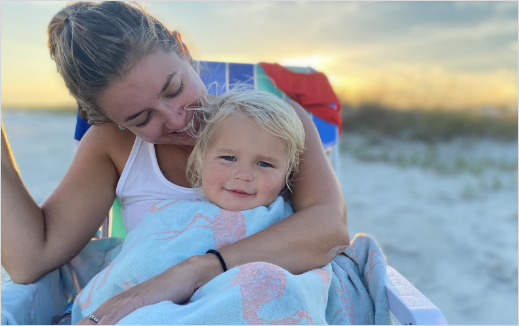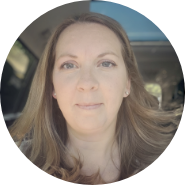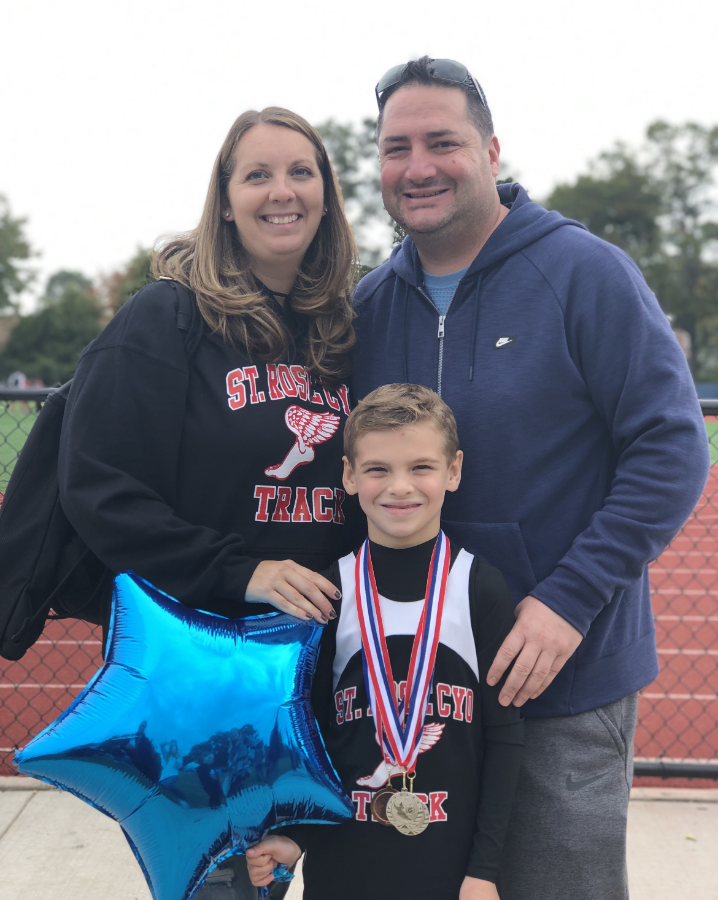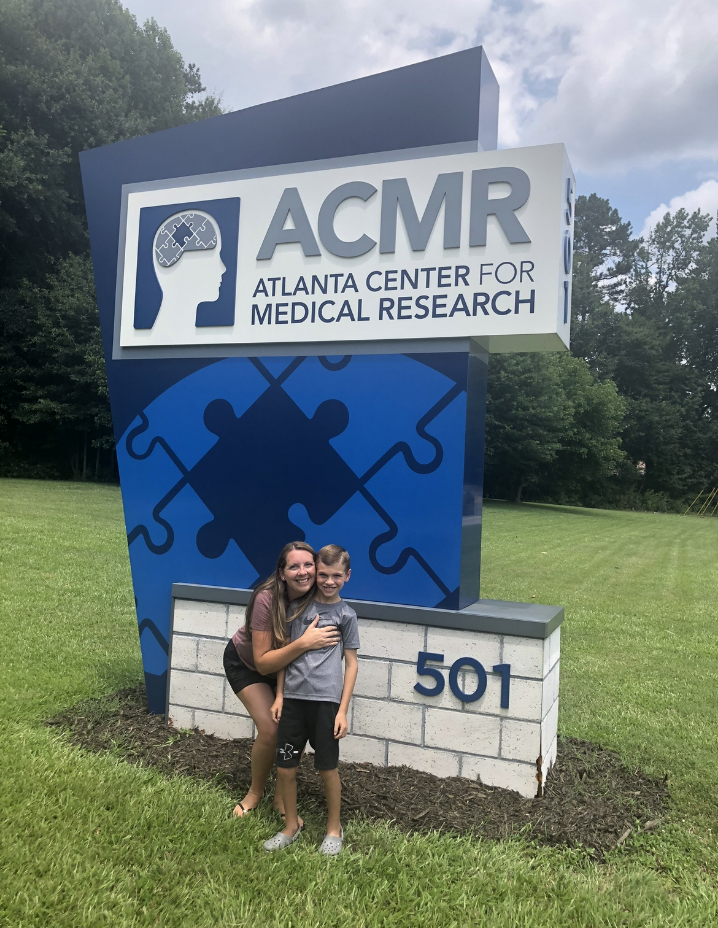This website uses cookies to help us give you the best experience when you visit and for certain analytics and marketing activities. By continuing to use this website, you consent to the use of these cookies. Please exit the website if you do not agree to such cookies being used. To find out more about how we use cookies, go to our Privacy Policy.
PATIENT STORIES
Our community, our
stories: Living with
Galactosemia
A look into their lives
Introducing members of the Galactosemia community who have cared for a loved one living with Galactosemia.
Take a closer look into their lives, including the challenges they’ve faced, the questions they’ve asked, what they wished they knew from the start, and the opportunities they’ve discovered during their journeys.
PROFILES AND STORIES
Living with Galactosemia

“It's important to me to be an active participant on this journey.”

Dealing with Galactosemia is like playing Whac-A-Mole. You never know what symptom is going to crop up next. My third child, Ansell, has Galactosemia, and now that I've been on this journey with her for 5 years, I’ve gained the knowledge to better manage baby Louise’s (age 7 months) diagnosis.
It hasn't been easy. When Ansell was first born, I experienced a rollercoaster of emotions. To hear that my child had this condition that I'd never heard of and didn't understand at first made me feel sad, anxious… It took me a long time to get there, but ultimately, I learned how to educate myself. Find good doctors. Enjoy our child’s infancy. When it comes to Galactosemia—and life, really—one must be willing to do hard things. Good things come from hard things.
My two older kids, Linden (age 9) and Laurel (age 7), sometimes get frustrated because so much of my focus is on Ansell: she requires a lot of extra attention. She has sensory processing disorder, speech challenges, delayed cognition, and certain things feel overwhelming to her. If Ansell gets wet outside of a “wet activity” like bathing or swimming, she may have a meltdown. As a result, we require more hands-on planning and make family decisions with Ansell’s condition in consideration.


“One must be willing to do hard things. Good things come from hard things.”
As a unit, our family really thrives on traveling. We travel a lot to the local lakes. We always attend the Galactosemia Conference each year. This year, it’s being held in Orlando, and my husband plans on taking Ansell, Laurel, and Linden to Sea World while I’m at the meeting. And then our next adventure is to Yellowstone National Park in Montana. Sure, there will be hard moments, but it will all be worth it.
Everyday life is busy: Laurel and Linden are home-schooled, and Ansell goes to a public pre-K program 3 days a week as well as a private school twice a week. Both schools honor her Individualized Education Program (IEP); she receives services that support her Galactosemia-related symptoms, including speech and adaptive behavioral therapy. All the kids except the baby right now have activities. We’re at piano recitals, sports events… I incorporate a lot of what I love to do into activities with my kids: I love photography, we’re avid readers, we hike and run.
“My hope is to be able to work myself out of a job because that will mean there’s finally a cure for this condition.”

“My hope is to be able to work myself out of a job because that will mean there’s finally a cure for this condition.”

My love for running inspired me to found GLOW for Galactosemia, a family-friendly night event and live/virtual race fundraiser to raise awareness and money for Galactosemia research. It also brings Galactosemia families together. The first event held in 2018 was the first time I met other Galactosemia families in person. I was able to hug people I’d met virtually, which was so meaningful. I was, and still am, glowing with pride that our Galactosemia community is able to come together to fundraise and advocate as a group. This year, GLOW raised over $50,000, we had 745 virtual participants, and 41 states were represented. The families and individuals that make up the Galactosemia community are why GLOW is such a success.
I’m also the vice president of The Galactosemia Foundation, which is a nonprofit organization that advocates for people with Galactosemia and their families. The work takes up a lot of my time, but it’s important to me to be an active participant on this journey. I work about 20 hours a week with the Foundation, but my hope is to be able to work myself out of a job because that will mean there’s finally a cure for this condition.

“Experience changed my connection with
him,
perhaps even made it stronger.”

We joke in our family that cinnamon Pop-Tarts® are what saved us. Besides the dietary restrictions placed on him by living with Galactosemia, my son Joey (11) was a picky eater in his younger years due to feeding issues. But cinnamon Pop-Tarts are the one thing we knew he’d eat. They continue to be a staple in our household. When he could barely speak, he would say “pop,” and we’d know he was hungry. He even dressed up as a box of Pop-Tarts one Halloween.
I like to think that everything happens for a reason. When Joey was diagnosed with Galactosemia as a newborn, it was a huge shock. After going through fertility treatments to get pregnant, and then a 72-hour labor, I just wanted to go home with my baby. It was a jarring experience hearing that we had to return to the hospital with him and that there might be complications, but that experience changed my connection with him, perhaps even made it stronger.
Once we learned everything that we could possibly learn about Galactosemia, my husband and I decided that we were not going to parent him as if he’s “different.” Galactosemia impacts our whole family and is a part of our everyday life but does not define who Joey is. He knows that he can’t have certain foods and that he faces learning impairments in school, but otherwise, we encourage him to be who he is: he plays golf, he enjoys video games, he cares for his friends, and he runs track.


“We were not going to parent him as if he’s ‘different’.”
In fact, it was track that first helped us connect with another member of the Galactosemia community. I met this family through social media and learned that their child would be in the same track meet as Joey. At that track meet, we got to meet! It was the first time Joey ever met someone else with Galactosemia. Joey’s friendship with this boy continued as they traveled and participated in a clinical trial together.
It’s been life-changing to connect with other moms who “just get it.” They understand that Galactosemia is not just about a restricted diet, that it’s a serious disease, with neurological impact, that represents a lifelong journey. It’s part of the reason that I became so involved in raising awareness and fundraising for Galactosemia. Fundraising provides a sense of healing for us; it’s a way to get our story out there.

“We meet the challenge”
Like anyone, we have good days, and we have bad days. But we celebrate both. My husband and I work full time, and Joey has two siblings, Victoria (age 8) and Adriana (age 1): life is busy! We unwind by taking vacations. I love to sit on a beach; the whole family loves being outdoors. I always call hotels in advance to make sure they can accommodate Joey’s demanding diet.
One of the biggest challenges with Galactosemia is the unknown. But, as Joey has taught me, we shift to make it work for us. If he needs support in school, we advocate for him to have the support he needs. We meet the challenge. We’re all trying our best and our hardest. And at the end of the day, that’s all you can do.
“We meet the challenge.”
Stay in the loop and get updates
Connect with Galactosemia Together:
References
- Baby's First Test. Classic galactosemia. Updated October 2018. Accessed October 5, 2020. https://www.babysfirsttest.org/newborn-screening/conditions/classic-galactosemia
- Berry GT. Classic galactosemia and clinical variant galactosemia. In: Adam MP, Ardinger HH, Pagon RA, et al, eds. GeneReviews®. Seattle (WA): University of Washington; February 4, 2000.
- Berry GT, et al. In vivo evidence of brain galactitol accumulation in an infant with Galactosemia and encephalopathy. J Ped. 2001;138(2):260-262.
- Coelho AI, Rubio-Gozalbo ME, Vicente JB, Rivera I. Sweet and sour: an update on classic galactosemia. J Inherit Metab Dis. 2017;40:325-342. doi:10.1007/s10545-017-0029-3
- Galactosemia. MedlinePlus US National Library of Medicine. Updated August 18, 2020. Accessed September 18, 2020. https://medlineplus.gov/genetics/condition/galactosemia/
- Genetics basics. Centers for Disease Control and Prevention. Updated March, 2020. Accessed October 1, 2020. https://www.cdc.gov/genomics/about/basics.htm
- Genomics & Precision Health: Genetics basics. Centers for Disease Control and Prevention. Updated March 20, 2020. Accessed October 8, 2020. https://www.cdc.gov/genomics/about/glossary.htm
- Martinelli D et al. Teaching neuroimages: galactitol peak and fatal cerebral edema in classic galactosemia. Am Aca Neurol. 2016;86:e32-e33.
- MedlinePlus Genetics Home Reference: National Library of Medicine (U.S.). Galactosemia. Updated August 18, 2020. https://medlineplus.gov/genetics/condition/galactosemia/
- National Centre for Inherited Metabolic Disorders. Galactosaemia. Updated October 2019. Accessed October 29, 2020. http://metabolic.ie/wp-content/uploads/2019/08/Galactosaemia-Booklet.pdf
- National Organization for Rare Disorders. Galactosemia. Updated 2019. Accessed September 22, 2020. https://rarediseases.org/rare-diseases/galactosemia/
- Otaduy MCG, Leite CG, Lacerda MTC, et al. Proton MR spectroscopy and imaging of a galactosemic patient before and after dietary treatment. AJNR. 2006;27:1-4.
- Rasmussen SA, Daenzer JMI, MacWilliams JA, et al. A galactose-1-phosphate uridylyltransferase-null rat model of classic galactosemia mimics relevant patient outcomes and reveals patient outcomes and reveals tissue-specific and longitudinal differences in galactose metabolism. J Inherit Metab Dis. 2019; 43:518-528. doi:10.1002/jimd.12205
- Rubio-Gozalbo ME, Haskovic M, Bosch AM, et al. The natural history of classic galactosemia: lessons from the GalNet registry. Orphanet J Rare Dis. 2019;14(1):86. doi:10.1186/s13023-019-1047-z
- Welling L, Bernstein LE, Berry GT, et al. International clinical guideline for the management of classical galactosemia: diagnosis, treatment, and follow-up. J Inherit Metab Dis. 2017;40(2):171-176. doi:10.1007/s10545-016-9990-5
